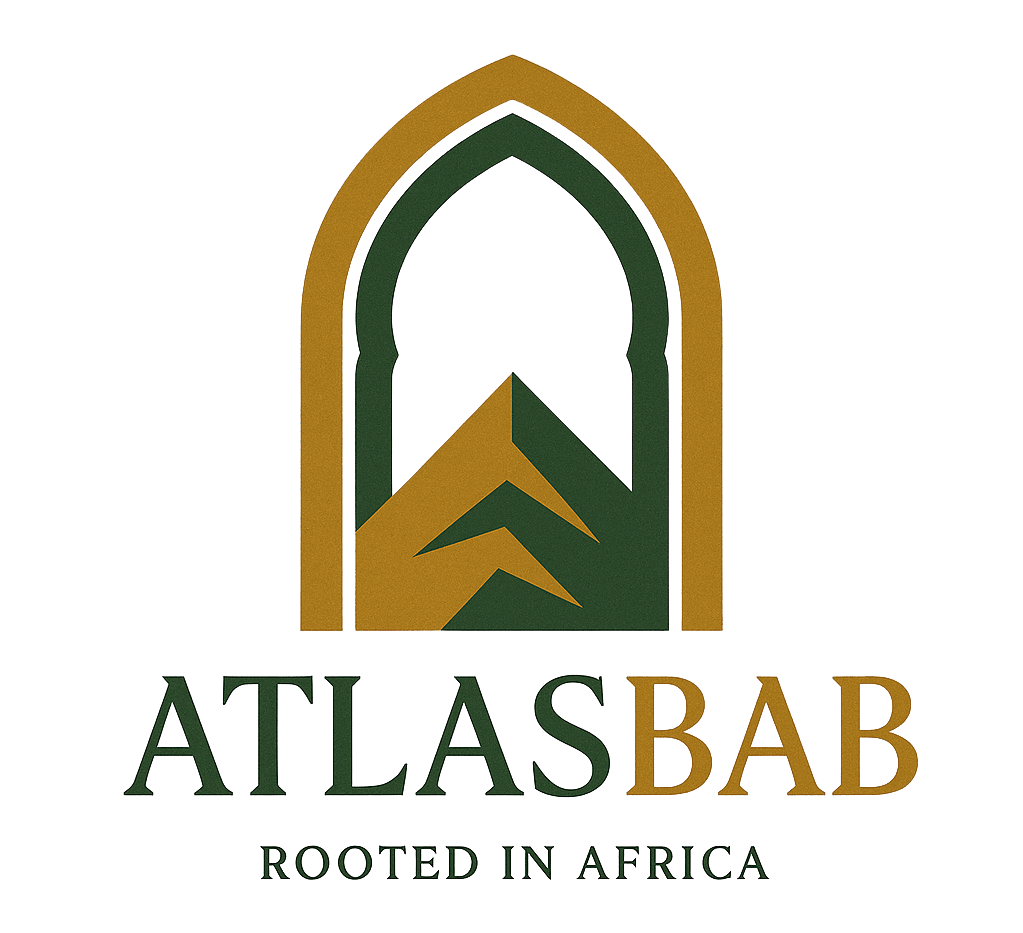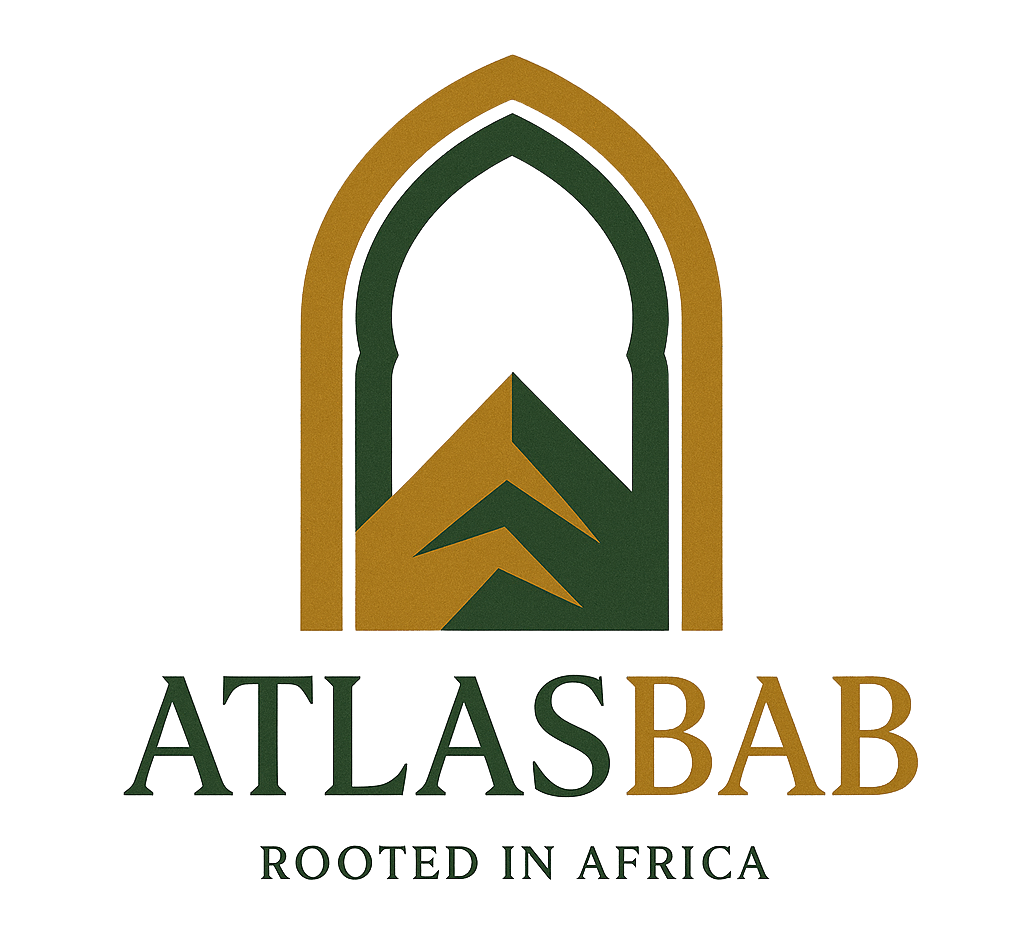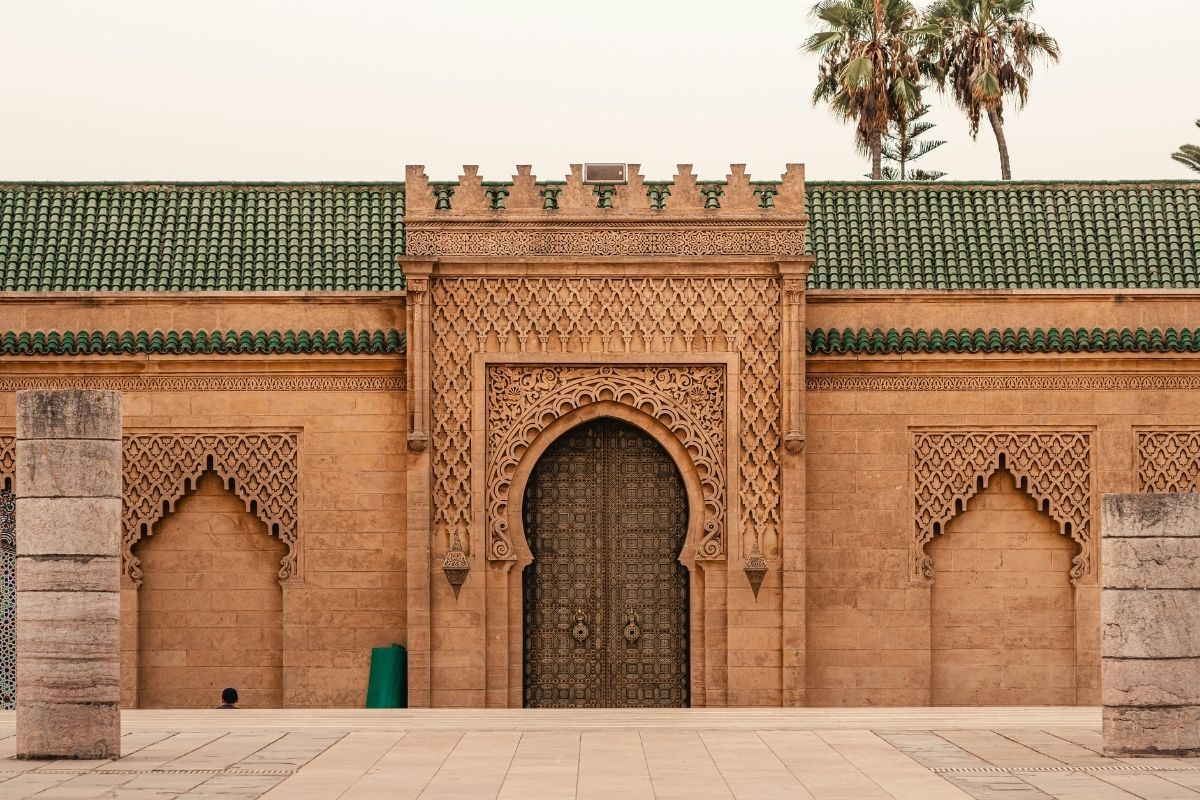In Morocco, gates and doors are not just functional—they are works of art. These architectural elements are an intrinsic part of Morocco’s rich cultural heritage, each one reflecting the country’s history, craftsmanship, and unique aesthetic. Whether found in the bustling medinas of Marrakesh, the ancient walls of Fez, or the tranquil kasbahs of the Atlas Mountains, Moroccan gates and doors hold great symbolic significance and are integral to the character of the country’s architecture.
From the intricate designs of zellige tiles to the sturdy wooden carvings adorned with brass studs, Morocco’s gates and doors are often as much about beauty as they are about protection. They serve as both a physical and symbolic threshold—marking the boundary between the inner sanctity of home or sanctuary and the busy world outside.
This guide will take you through some of the most beautiful and iconic gates and doors in Morocco, delving into their history, design, and the cultural significance they hold.
The Gates of the Old City of Fez: A Timeless Introduction
Fez, one of Morocco’s oldest and most revered cities, is home to some of the most intricate and historical gates in the country. The city’s ancient medina, a UNESCO World Heritage site, is surrounded by fortified walls with stunning gates that welcome visitors into the city’s heart.
Bab Boujloud (Blue Gate) is perhaps the most iconic of them all. This magnificent entrance, located at the western edge of the medina, is a striking blend of Andalusian and Moroccan design. Its name, “Blue Gate,” comes from the blue and green tiles that adorn its facade—colors symbolizing heaven and earth. The gate’s elegant arches, delicate carvings, and tiled patterns set the tone for the wonders that await inside the medina.
Another noteworthy gate in Fez is Bab el-Makhzen, known as the Royal Gate. It leads to the Royal Palace and is decorated with elaborate brass and copper detailing, making it a true symbol of Moroccan craftsmanship. The wooden doors of these gates often feature intricate carvings that tell stories from Moroccan history and folklore.
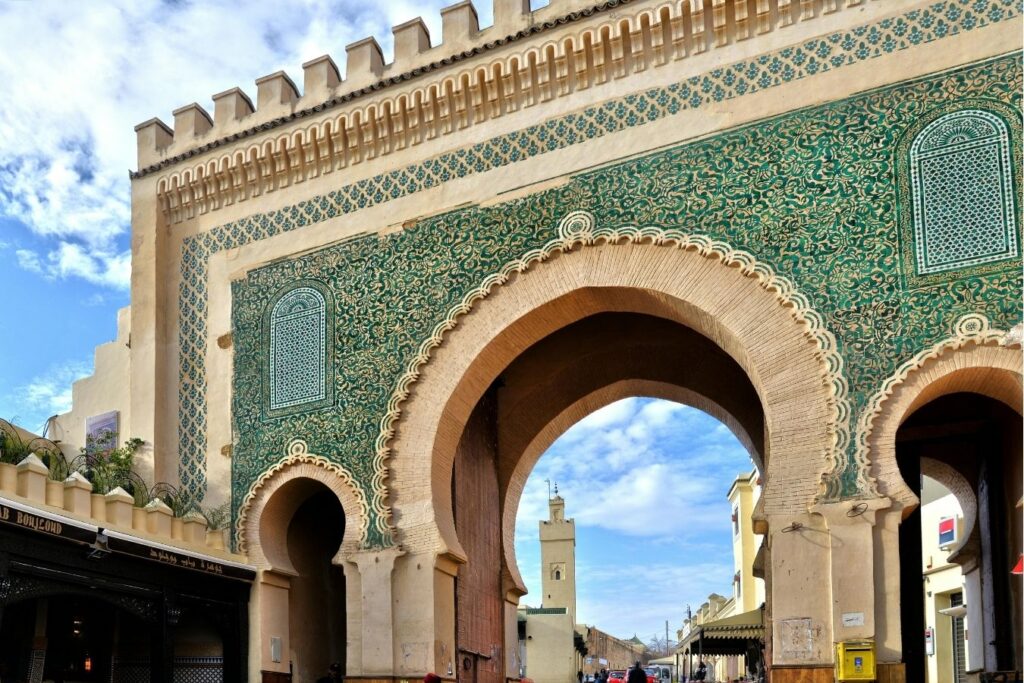
The Majestic Gates of Marrakesh: Icons of the Red City
Marrakesh, known as the “Red City” for its distinctive red sandstone walls, is famous for its vibrant gates that define the character of the city. Many of these gates, such as those around the medina, are centuries old and are adorned with stunning zellige tilework, stucco carvings, and massive wooden doors.
One of the most remarkable gates in Marrakesh is Bab Agnaou, one of the 19 gates of the city. Dating back to the 12th century, it was built by the Almohad dynasty and remains one of the most beautifully preserved gates in Morocco. The gate’s horseshoe arches, massive doorways, and intricate carvings in the stonework make it a true masterpiece of Moroccan architecture.
Another famous gate is Bab el-Khemis, which stands as a grand entrance to the medina from the souks. This gate’s bold, geometric patterns and the massive, colorful doors stand as a testament to the grandeur of the city’s past.
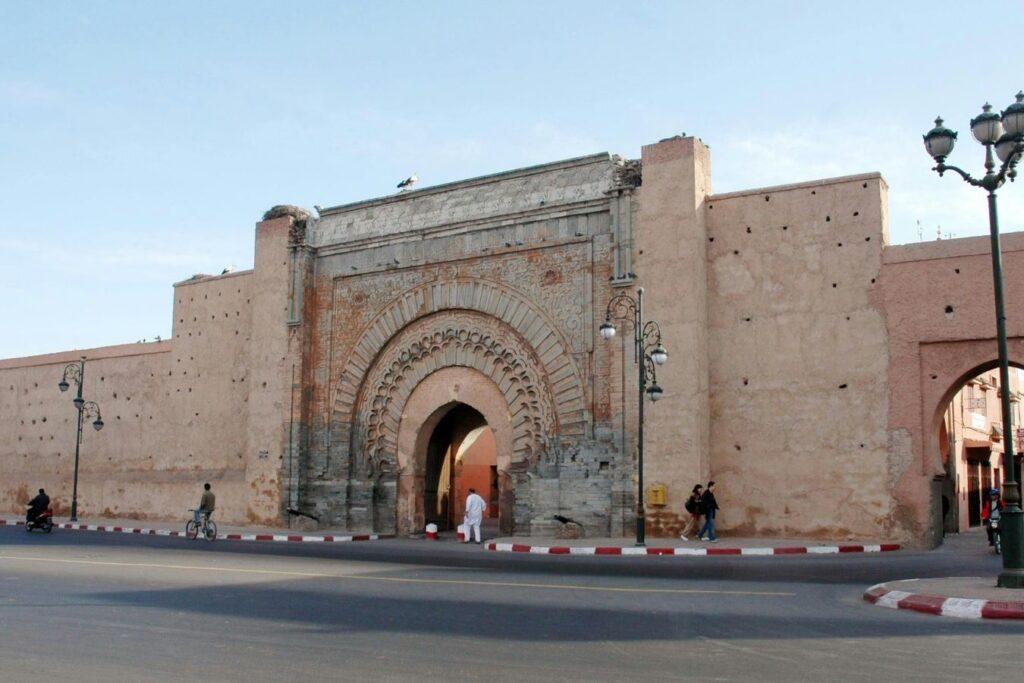
The Colorful Doors of Chefchaouen: A Blue Dream
Chefchaouen, the “Blue City” nestled in the Rif Mountains, is famous for its charming streets painted in shades of blue. But beyond its beautiful buildings, Chefchaouen is also home to some of the most stunning wooden doors in Morocco. These doors are often painted in shades of blue, reflecting the city’s mystical ambiance, and are adorned with brass studs and intricate carvings that showcase the influence of both Berber and Andalusian styles.
Chefchaouen’s doors exude a sense of peace and serenity, fitting the city’s reputation as a spiritual haven. The doors often have intricate ironwork, featuring swirling, floral motifs that are designed to reflect the tranquility and beauty of the surrounding landscape.
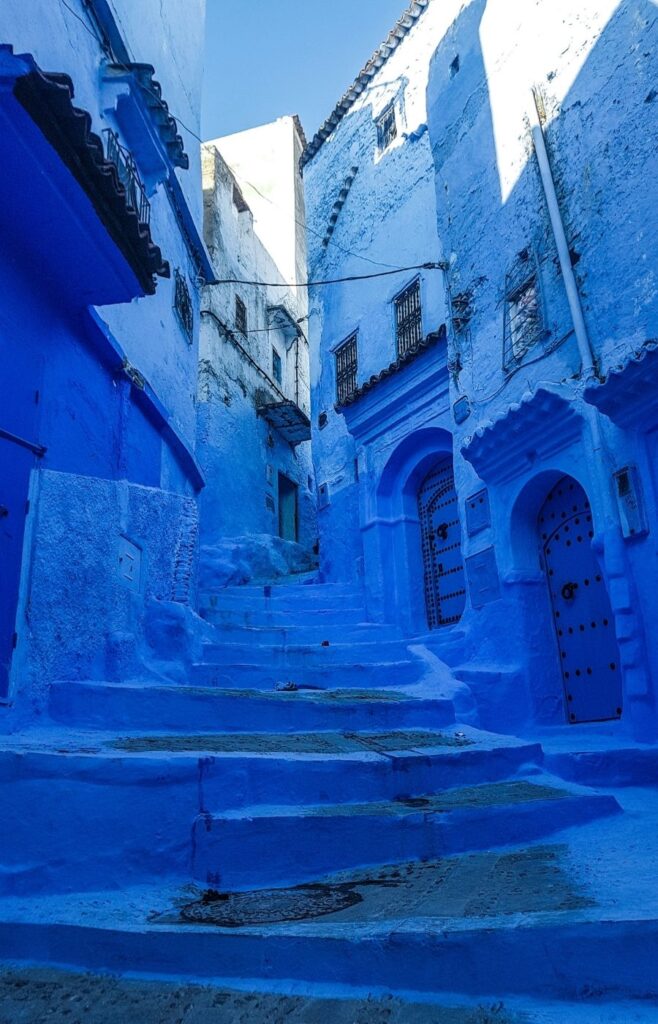
The Gates of the Medina in Essaouira: A Blend of Culture and Craftsmanship
Essaouira, a coastal city known for its windswept beaches and historic medina, is another Moroccan city with remarkable gates and doors.
The Bab Marrakech is a stunning gate that connects the medina to the city’s old harbor. Made of stone and wood, it features large wooden doors with intricate carvings and brass studs. The architectural design of Essaouira’s gates reflects the blend of cultures that have passed through the city’s port over the centuries.
The gates of Essaouira are often decorated with vibrant blue shutters and white-painted doors, giving the city a distinctly coastal feel. These doors often feature beautiful geometric patterns that represent the fusion of Moroccan and European design.
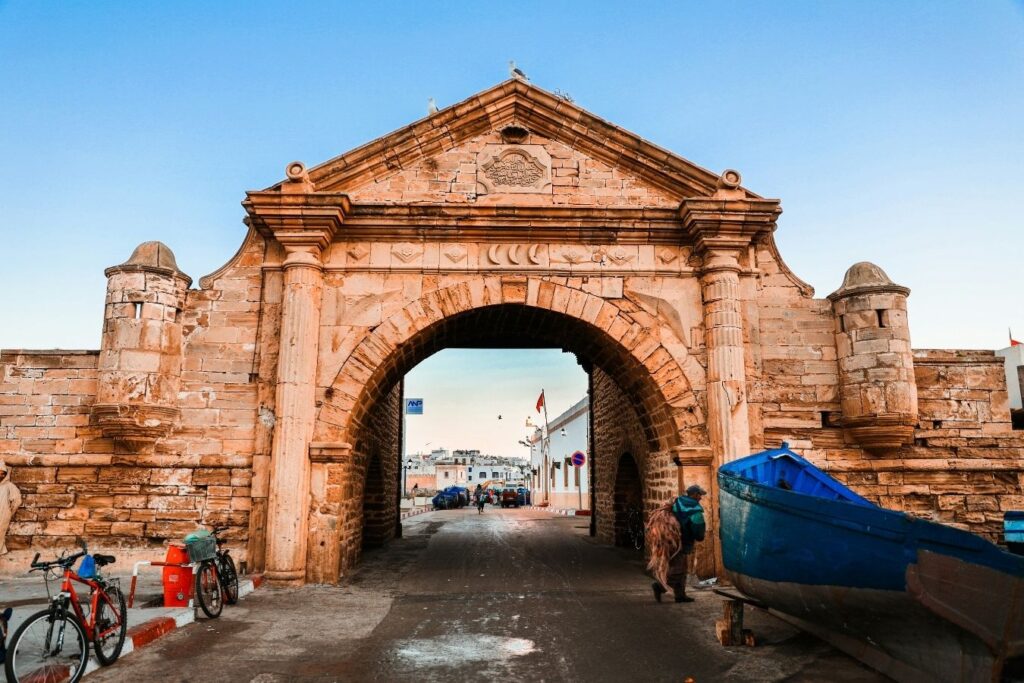
The Kasbah Gates: Strength and Elegance in the Atlas Mountains
In the Atlas Mountains, you’ll find a different kind of door—a reflection of the rugged terrain and the fortified nature of the kasbahs. The kasbah gates are often large, wooden doors reinforced with iron studs, designed to protect against invaders while also serving as gateways to the peaceful, self-sustaining communities inside.
Ait Benhaddou, one of the most famous kasbahs in Morocco, is home to a series of mud-brick doors and gates that evoke the ancient Berber traditions. These kasbah gates often have geometric shapes and zigzag patterns in the wood, reflecting the simplicity and strength of Berber craftsmanship.
These kasbah gates are not just functional—they are artistic expressions, with each one telling the story of the community it protected. The use of locally sourced materials, such as mud brick, wood, and stone, showcases Morocco’s ability to create beauty and utility from the land itself.
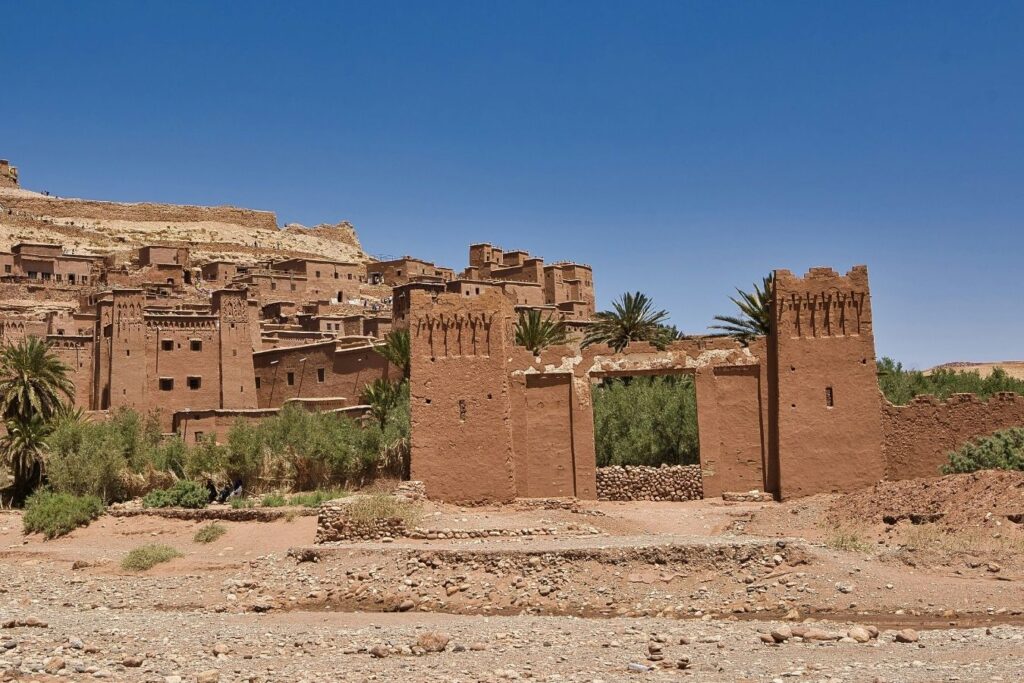
The Gates of the Royal Palaces: Elegance and Grandeur
Morocco’s royal palaces, like the Royal Palace of Fez and the Royal Palace of Marrakesh, are known for their grandeur and luxury. These gates, which lead into the most prestigious spaces in the country, are often characterized by intricate details and opulent materials.
The Royal Gate of Marrakesh is one such example. It features brass inlays, wooden carvings, and a design that reflects the wealth and power of Morocco’s ruling dynasties. These gates are designed not only for security but to impress visitors with their artistic splendor.
In these royal gates, you’ll often see gold leaf, intricate patterns, and majestic arches that draw from both Islamic and Andalusian architectural traditions. The rich detail on these doors is designed to symbolize the divine beauty of the ruler’s palace and Morocco’s deep cultural history.
The Symbolism of Moroccan Gates and Doors
Gates and doors in Morocco are far more than just functional structures. They are symbols of protection, beauty, and identity, representing the cultural fusion and historical richness that make Morocco so unique. Whether in the labyrinthine streets of Fez, the vibrant blue city of Chefchaouen, or the fortified kasbahs of the Atlas Mountains, Moroccan doors and gates offer a window into the soul of the country.
They are both gateways into the past and entry points into the future, marking the boundary between the physical and the spiritual, between the ordinary and the extraordinary. The craftsmanship and artistry that go into every door and gate are a testament to the country’s deep respect for beauty, tradition, and history.
